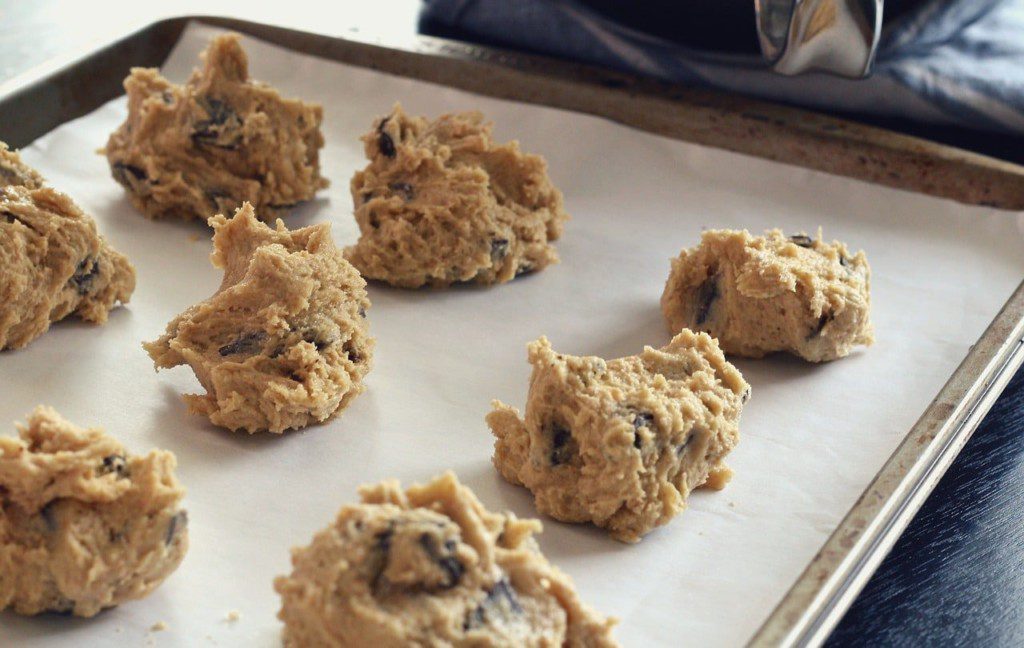Parchment paper is easy to use, especially when you want to line molds or cake tins with it. For round tins, the easiest way to line it with this paper is to place the tin over the paper, outline the bottom of the tin on the paper and cut this circle up. For rectangular or square-shaped tins, just cut the parchment paper in rectangles with sides that are a little longer than the tin. Make cuts at the corners of the paper diagonally. These cuts need not be longer than an inch or two.
2. Measuring Cups
Measurements are absolutely important in baking. The quantity of each ingredient adds to the texture of the end product. For example, the amount of sugar in cookie dough decides how much the cookie expands during baking and this expansion decides whether the cookie ends up being chewy or crispy. Adding less or more of an ingredient can make some major changes in the product, making measuring cups and spoons some of the most important bakery tools.
Measuring cups can either be a set of cups of various capacities of a single cup with its different measurement levels clearly mentioned. The sets are generally made of food-grade plastic or stainless steel. Single cups tend to be made of glass, polycarbonate or plastic.
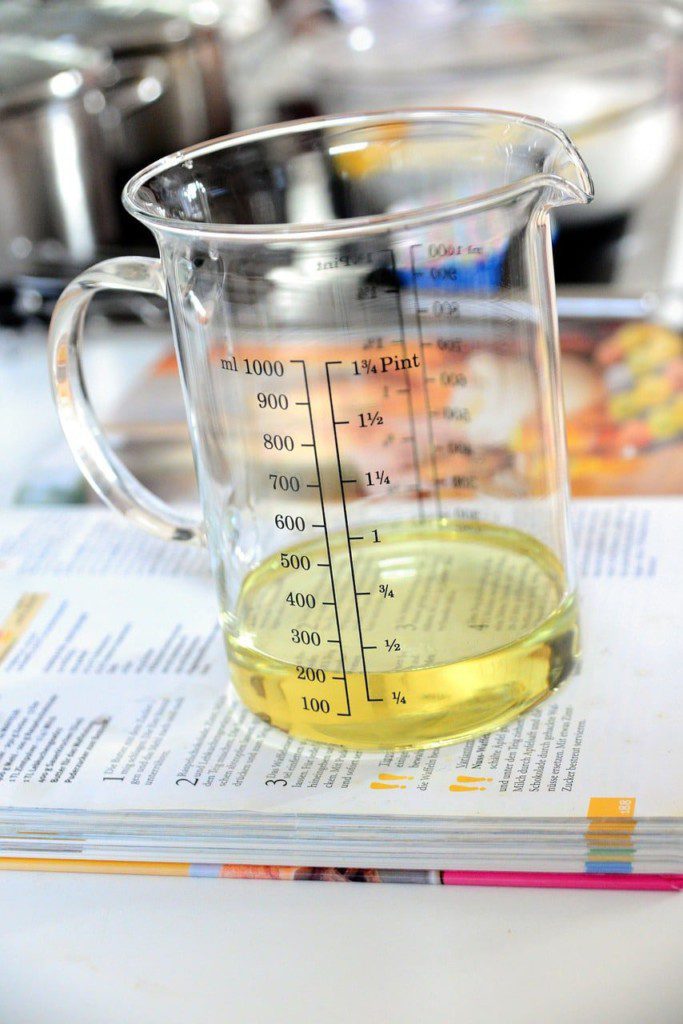
Another type of measuring instrument used in the bakery is the measuring spoons. The measuring spoons are generally a set of 4 or more spoons of various capacities. These are used for ingredients that are not required in very large quantities like salt, baking powder, baking soda, etc. These are usually made of food-grade plastic or stainless steel. They are inexpensive and meant to last for years.
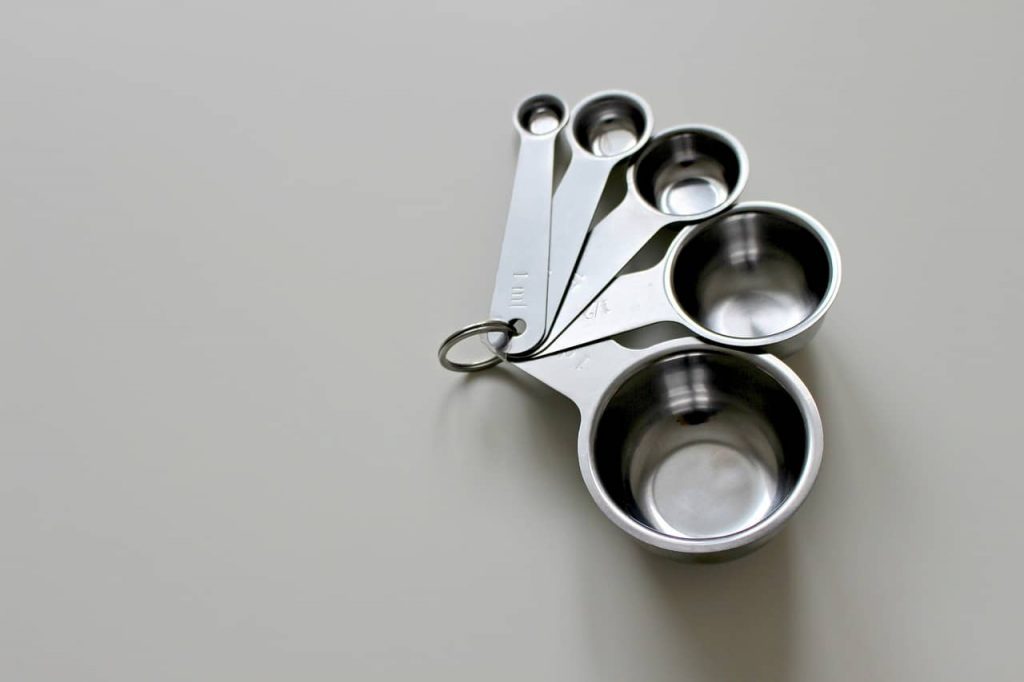
Yet another way of accurately measuring ingredients for baking is with the help of small weighing scales. However, these are suggested to be bought only if you really are into baking seriously since they could be slightly pricey (good quality and highly accurate weighing scales). They do make measuring ingredients easy but can require some amount of calibration from time to time.
3. Sift
There are mainly two kinds of sifts used commonly in baking. The first kind is the larger drum sieve. These are used to sieve the flour and other dry ingredients before using it in any dough or batter. This is a very important step. Any unwanted bits, lumps or contaminants need to be gotten rid of right at the beginning. This also helps you mix up all of the dry ingredients properly before you begin adding the wet ingredients.
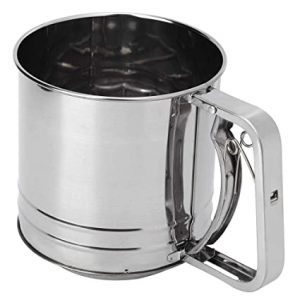
The second type is the crank sift. This tends to be smaller and has a crank system in place to disperse the ingredient being sieved. This is generally used to dust flour on work surfaces or to dust flour over the ready dough, usually in the case of bread. This sift looks more like a mug with a smaller handle inside the regular handle or has a small rotating handle on the side.
Most crank sifts are made of stainless steel and are long-lasting. In the case of drum sifts, however, they could be made of stainless steel, food-grade plastic or even wood. Drum sieves are perfect for when you need to process large amounts of dry ingredients.
4. Cookie Cutters
Making cookies is the simplest of baking tasks. It also allows you to let your imagination run wild in terms of flavors and shapes. To get cookies that are consistent with the same shape, you could use cookies cutters. These cutters are mostly made of stainless steel and have one cutting edge while the other is smooth for you to place your hand on.
These are available in various shapes, the classic ones being round, heart and star-shaped. These just need to be pressed down on the rolled out cookie dough and then the cut up dough can be easily transferred to the baking tray. Most cookie-cutter makers tend to push out other uniquely shaped cookie cutters during certain times of the year such as Christmas and Easter.
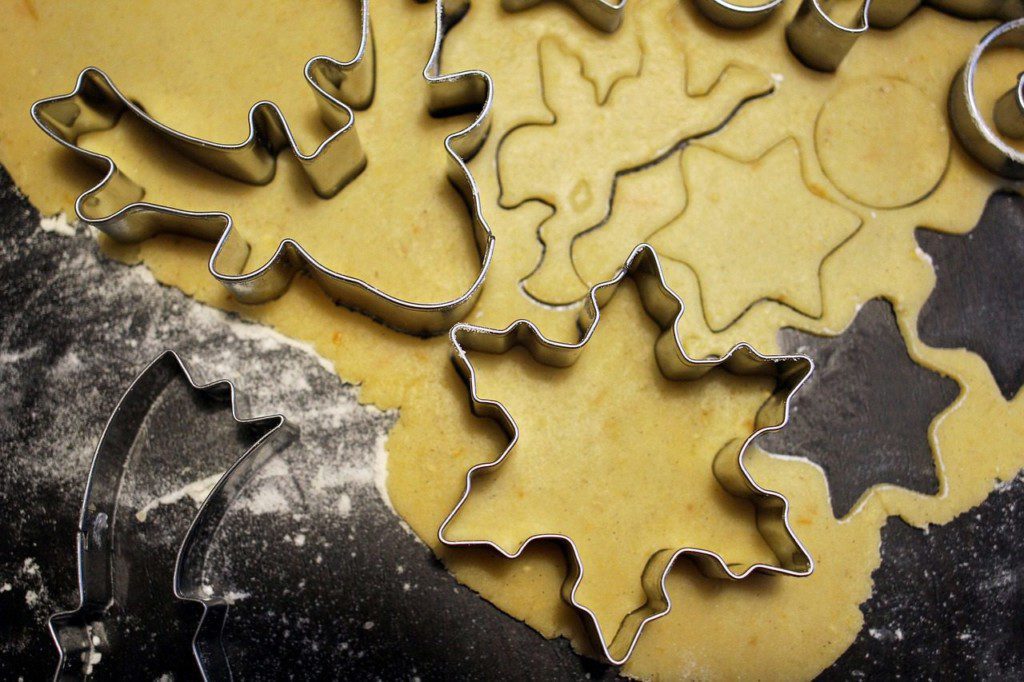
There are some manufacturers that produce plastic cookie cutters. These work great initially but tend to break over time or lose their cutting edge sharpness, making them completely useless. That is not the case with metal cutters since they are durable and meant to last for years.
5. Silicone Sheets
Silicone sheets or Silpat Sheets are alternatives to parchment paper. These are better than baking paper because they can be reused. Baking on silicone sheets would mean zero greasing is required. Anything that is baked on silicone sheets comes right off very easily and leaves behind little to no crumbs to be cleaned.

They are a little more expensive compared to parchment paper. However, silicone sheets last for years since they require minimal maintenance and are completely easy to clean and reuse. Most silicone sheets are even dishwasher safe, making your work even more manageable. There are certain silicone sheets that come with cookie/ pastry size outlines. This helps you get uniform sizes all across the baking tray.
6. Ramekin Bowls
Ramekin bowls are small bowls generally used to make souffle, molten chocolate cakes, single portion cheesecakes, creme brûlée or pot pies. They are used for cooking and serving. They are made of either porcelain, glass or ceramic. The glass ramekin bowls tend to have thinner sides, making them perfect for stovetop cooking. The thicker sided ramekins are perfect for use in an oven or even in microwave ovens.
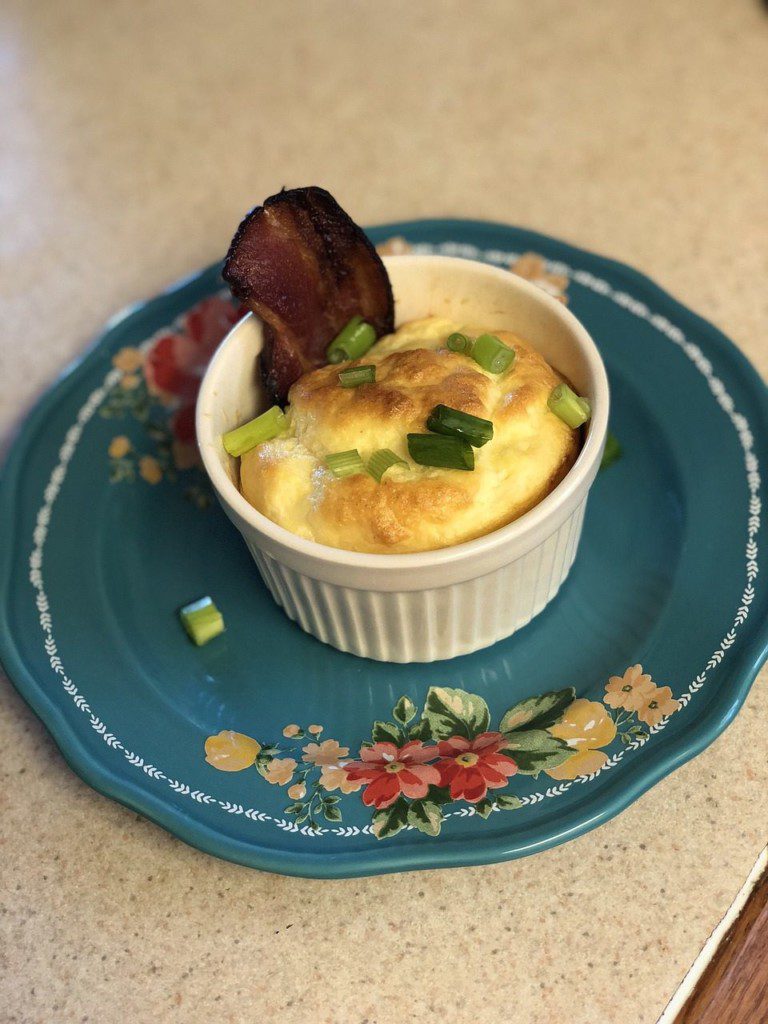
The ramekin bowls come in various sizes with capacities ranging from 90-200 milliliters. These are single portion bowls. Although traditionally they are white in color and round in shape, there are ramekin bowls available in other shapes and with intricate designs on them as well. These also double up as serving dishes for sauces and dips like mayonnaise and ketchup.
7. Rolling Pin
A rolling pin is absolutely essential for baking, especially if you are into baking products like cookies, tarts and puff pastries. There are different types of rolling pins that you could use which include the traditional straight rolling pins with handles on the side, straight (cylindrical) rolling pins and tapered end rolling pins.
Rolling pins also differ according to their materials. There are traditional wooden rolling pins. Then there are the more modern metal, marble or silicone rolling pins. The regular wooden rolling pins need a little dusting of flour on them before you begin rolling out dough.

Metal and marble rolling pins are slightly heavier so you need not apply a lot of pressure, especially when you are trying to roll out thicker dough. They can also be cooled by placing in the refrigerator while rolling out dough with a lot of butter. Rich dough with a higher quantity of butter needs less handling and cooler rolling pins because melting of butter before baking can seriously affect the texture of the product.
Silicone rolling pins are a relatively new addition to the rolling pins family. Their biggest benefit is their non-stick quality, which would make rolling out dough easier without the need for dusting extra flour.
The shape of the rolling pin also matters. In the case of straight rolling pins with handles, you need to apply more pressure particularly when you’re rolling out tough dough. Straight and tapered end rolling pins do not require the same amount of pressure. Then again, straight rolling pins lack when it comes to comfortable gripping, which is where tapered endpins and rolling pins with handles fare better.
8. Whisk
Whisks are yet another essential part of a bakery. These serve multiple purposes, from mixing a batter to whipping up cream for your icing and decorating. There are many different types of whisks but the ones that play important roles in a bakery are the traditional balloon whisks, French Whisks, and ball whisks.
The traditional balloon whisk is the all-purpose whisk. These serve almost all the purposes a whisk should but are ideally meant for whipping air into the batter or meringue. The whisk has a shorter and wider whisking end compared to other whisks, giving it the name.
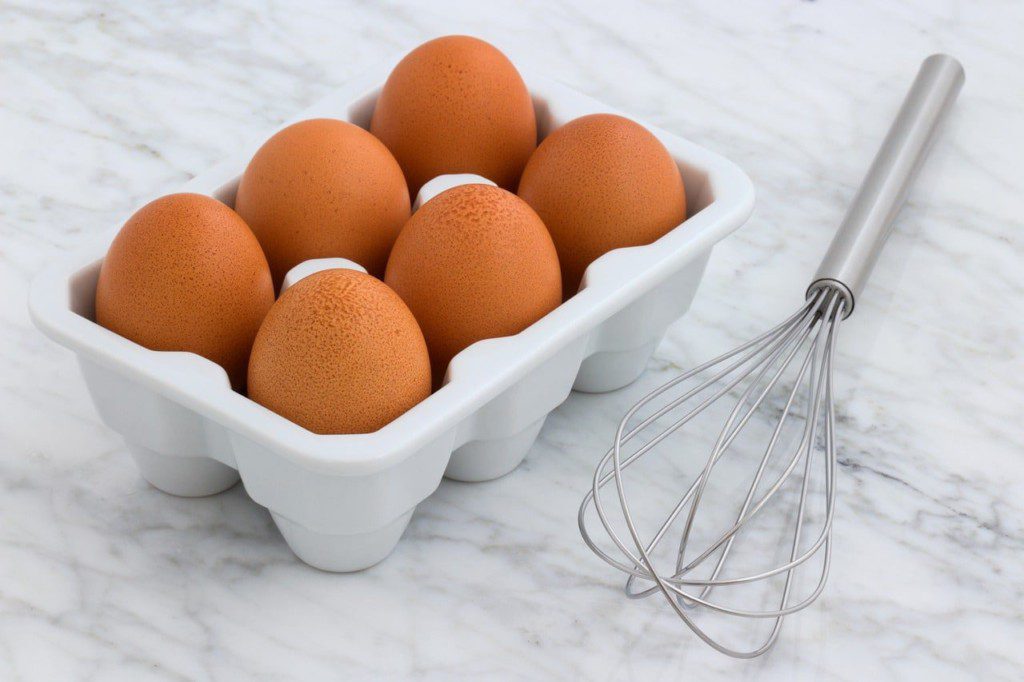
The French Whisk has a much longer and narrow whisking end. It is the most commonly found whisk. This is perfect for heavy-duty whipping and mixing. It does the job of incorporating air into the batter or mix fairly well.

A ball whisk is more like an open-ended whisk with a tiny metal ball at the end of each wire. The ball ends allow you to reach every corner of the bowl or pot. This whisk is great for when you want to incorporate a lot of air into the mix.
Using a manual whisk like the ones above does take a lot of energy. If you wish to get things done faster without expending a lot of energy, you could use an electric hand mixer.
9. Serrated Knife
A serrated knife or a bread knife plays a key role in a bakery. A regular knife adds a lot of pressure on the spot being cut. This type of pressure is not good for baked cooks as it tends to crush the product and does not give you clean cuts, especially in soft products like cakes. A serrated bread knife applies a more even pressure thanks to the serrated edge and cuts into the product without the requirement of a lot of pressure.
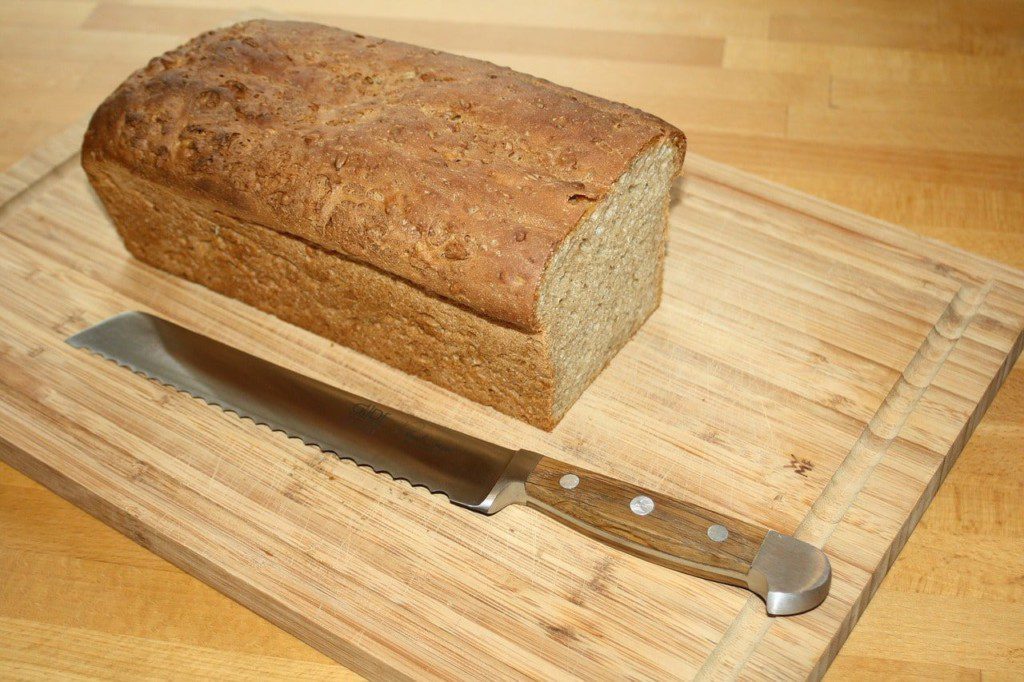
Most serrated knives have a long blade of around 12-14 inches. This is because it is easier to cut through large products like sheet cakes in one go. This also ensures a clean and even cut. The knives tend to have wooden handles for better gripping.
10. Mixing Bowl
Mixing bowls are important. Whether you use a whisk or an electric hand mixer, mixing bowls are necessary. These are not only required when you are mixing up a batter or whipping up some cream but they are also needed when you leave your yeasted dough out to proof.
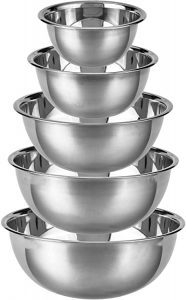
Mixing bowls could be made of stainless steel, glass or plastic. Obviously, stainless steel bowls are more long-lasting and easy to maintain. However, stainless steel bowls could heat up when you are constantly using a whisk or mixer in it, leading to changes in batter or dough. With glass bowls, there are no worries about heat production. However, they require more care and maintenance. Plastic bowls are easier to handle and do not generate a lot of heat, but they do tend to break or crack over time.
11. Cooling Racks
When you think about baking, many might fantasize about eating hot cookies or fresh buns straight out of the oven. Sorry to break it to you, but that wouldn’t be the best idea! Baked goods tend to continue cooking even after being taken out of the oven thanks to residual heat. And this carry-over cooking is important for the right texture and flavor to develop.
If you leave the baked products in their molds or trays after cooking, moisture begins to settle under them because of the steam that comes off of them while condensing. This will give you soggy bread and cookies that would go bad very soon. Also, since the mold or tray itself is also very hot, the products will take longer to cool down and in some cases might even lead to overcooking the baked goodie.
To avoid this mess a cooling rack is needed. The cooling rack is a rack with a series of thick wires on which you can keep the hot products. The gap in the wires allows air to circulate around the product letting the item cool down faster without the problem of steam condensing under it.
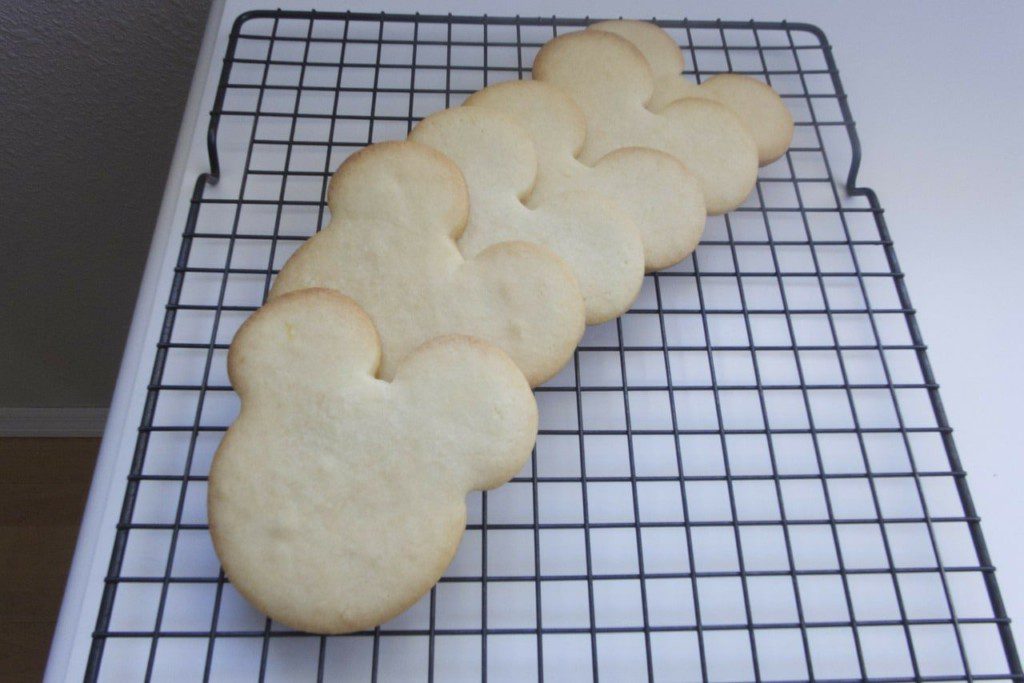
Related Reading:
Are you a beginner at baking? This list of baking utensils you will need for your kick start baking journey.
12. Cake Decorating Tools
There are a number of tools available that will help you decorate cakes, making them look even more appetizing and appealing than before.

12.1 Turntable
Turntables are absolutely essential for you when decorating cakes. These are small tables that have a rotating surface that lets you look at all sides of the cake without having to move all the way around it. This lets you decorate the cake on every side without missing a single corner.
12.2 Piping Kit
Piping kits are definitely needed to decorate cakes. Most kits available online include at least 5 or more piping nozzles. These nozzles let you make the designs of your choice on cakes, cupcakes and more. You can even make use and throw piping bags with the help of parchment paper for thinner lines and for writing messages on cakes.
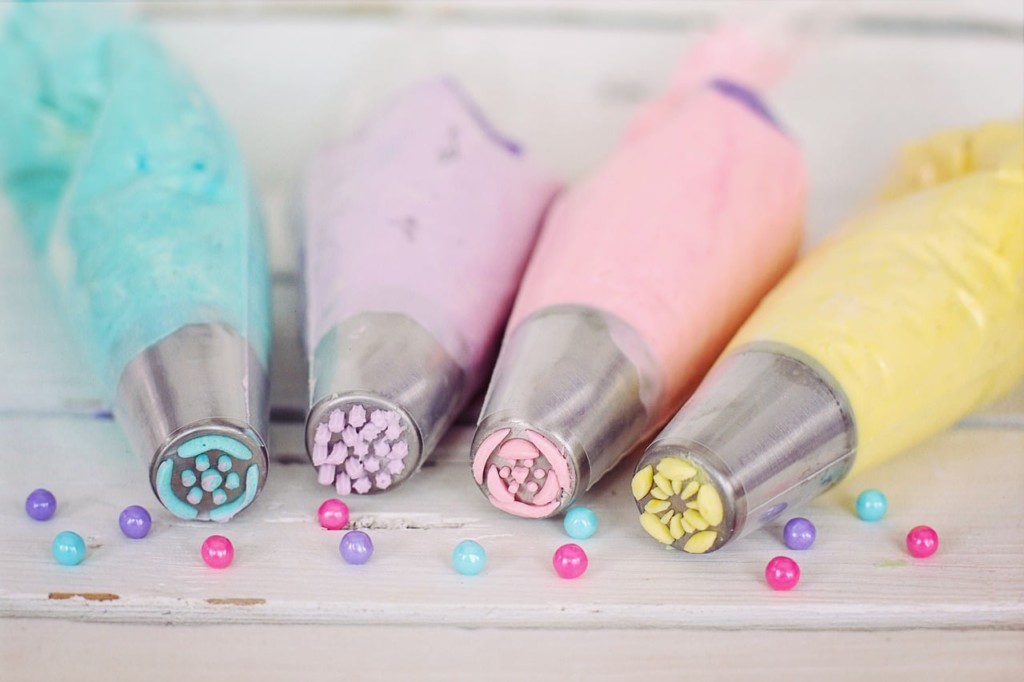
12.3 Palette Knife
Palette knives serve multiple purposes. They can be used to pick up large layers of cakes or sheets of dough. They can also be used to apply or manipulate the icing on cakes to make rustic looking designs.
12.4 Icing Comb
Icing combs are of different types. You have the smooth-surfaced icing combs that are used for smoothing icing or fondant over the cake surfaces. Then there are the jagged-edged icing combs that help you make even lines on the icing on the cake.
12.5 Fondant Mould
Fondant molds are basically plastic or silicone molds into which you press in fondant to get decorative pieces with intricate details for your cakes. These molds could be of any shape and size. Professional bakers even go to the lengths of getting customized molds for their businesses.
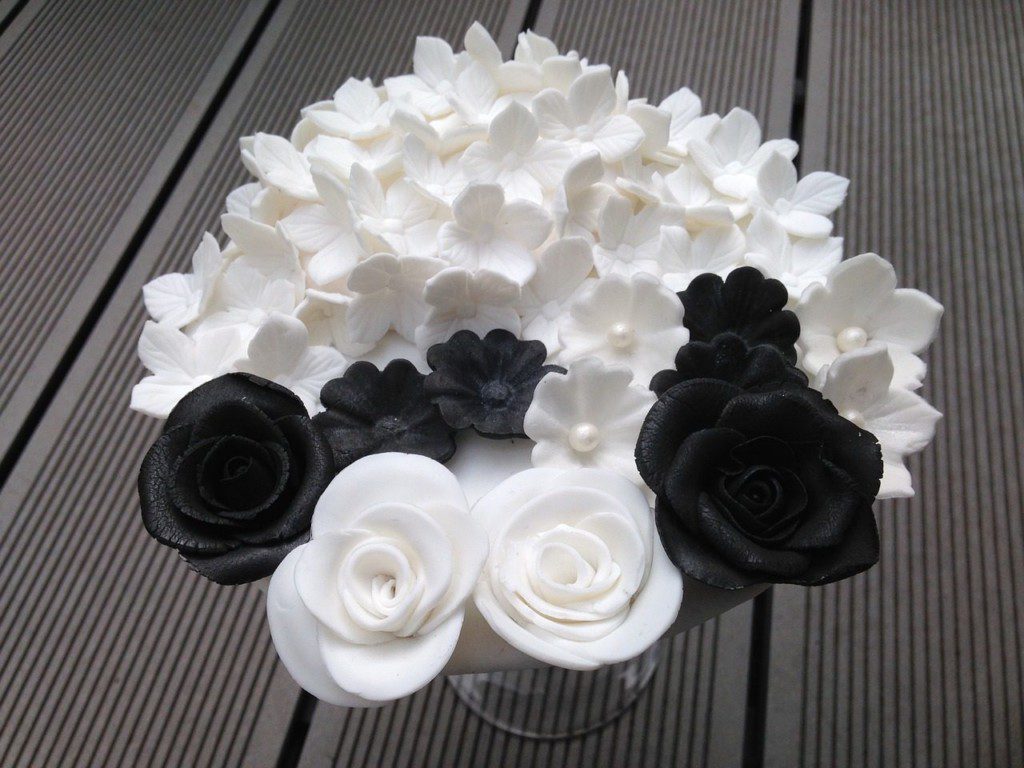
12.6 Stencils
There are stencils available that act as guides for you when you need to make very detailed designs on your cakes. These stencils reduce the time you would need to put in to make such designs and make them absolutely easy.
12.7 Cake Toppers
Cake toppers can either be edible hand made sculptures or wordings, or it could be plastic wordings and dolls. These are basically accessories that you place on the top of the cake to complete its appearance according to the theme or occasion.


Frequently Asked Questions
Here is a list of the most asked FAQs about the baking tools we have answered.
1. What does a baking mat replace in the kitchen?
Baking mats are used to cover baking sheets for cleaner baking and easy cleanup. You can replace using parchment paper and aluminum foils by replacing it with baking mats.
2. What is the purpose of a dough docker?
The purpose of the dough docker is simple. It prevents the dough from over rising. Dough docker is used to piercing pizza, bread, cookies, pastry or cracker dough.
3. What equipment do you need to bake?
In this article, we mentioned the twelve essential baking equipment one needs, from mixing bowls to cake decorating tools. Some of which are
- Cooling Racks
- Serrated Knife
- Cake Toppers
- Whisk
- Measuring Cups
- Sift
- Cookie Cutters
- Silicone Sheet
4. What is the easiest thing to bake at home?
The easiest thing one can bake at home (even a beginner can) are muffins, cookies, brownies and a cake.
Final Words
We hope that our complete guide helped you to get the proper equipment one needs during baking to the desired result one wants.
In case, if you think that we missed some major baking gadgets, equipment or tools, you can share the list with us in the comment section below.


